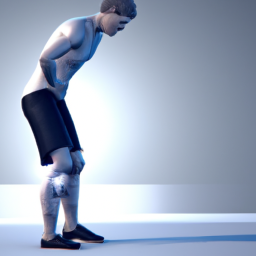Back Pain and Leg Pain: A Comprehensive Guide
Back pain and leg pain can be debilitating and frustrating for sufferers. From dull aches to sharp pains, these conditions can limit physical activity and decrease quality of life. Fortunately, there are treatments available to help alleviate the symptoms of back and leg pain.
In this article, we’ll discuss the causes of back and leg pain, provide detailed information on the different types of pain that may be experienced, and outline treatments available to manage back and leg pain.
What Causes Back and Leg Pain?
Back and leg pain can have a variety of causes. In some cases, the cause is a medical condition or injury. Other times, the cause may be unknown. Some common causes of back and leg pain include:
- Herniated discs or bulging discs in the spine
- Spinal stenosis
- Sciatica
- Arthritis
- Trauma or injury to the back or legs
- Fibromyalgia
- Osteoporosis
Types of Back and Leg Pain
The type of back and leg pain experienced will depend on the source of the discomfort. Common types of back and leg pain include:
- Dull Ache:
A dull ache in the back or legs is most commonly caused by muscle strain or tension.
Sharp pain can indicate a more serious problem such as a herniated disc or sciatica. It can also be caused by a strained muscle or tendon.
A burning sensation in the back or legs is usually caused by nerve damage. It can also be caused by inflammation in the area.
Shooting pain typically indicates an underlying medical condition such as sciatica or nerve damage.
Numbness in the back or legs can indicate a pinched nerve. It can also be caused by inflammation in the area.
Treatments for Back and Leg Pain
The treatment of back and leg pain will depend on the source of the discomfort. Treatment options may include:
- Physical Therapy:
- Medication:
- Injections: < p >Injections such as cortisone shots may be used to reduce inflammation in areas affected by back and leg pain.< li >< u >< em >Surgery: < p >In some cases, surgery may be recommended to repair damaged discs or nerves in order to alleviate back and leg pain.
< h2 > Lifestyle Changes
< p > Along with treatment options, lifestyle changes can help reduce symptoms of back and leg pain. These changes include:
< ul >< strong >< li >< u >< em > Exercise : < p > Regular exercise can strengthen muscles, improve flexibility, reduce inflammation, and increase range of motion. Stretching can also help reduce tightness in the back and legs. < strong >< li >< u >< em > Diet : < p > Eating a healthy diet rich in fruits, vegetables, whole grains, lean proteins, and healthy fats can help reduce inflammation and manage chronic pain. Avoiding processed foods, refined sugars, and unhealthy fats can also help reduce inflammation. < strong >< li >< u >< em > Stress Management : < p > Reducing stress levels can help reduce symptoms of back and leg pain. Practices such as yoga , meditation , deep breathing , tai chi , massage , acupuncture , or journaling can all help reduce stress levels .
< h2 > Conclusion
< p > Back and leg pain can range from mild discomfort to debilitating agony . Knowing the cause , understanding different types of pain , exploring treatment options , making lifestyle changes , all these things will help sufferers find relief from their discomfort . If you are suffering from chronic back or leg pain , it is important to talk to your doctor to find out what treatment options are best for you . With proper care and management , you can find relief from your symptoms .
Physical therapy is often recommended for those suffering from chronic back and leg pain. Physical therapy exercises can help strengthen muscles, improve flexibility, reduce inflammation, and increase range of motion.
Medication may be prescribed to help reduce inflammation, relieve muscle spasms, and manage chronic pain.
